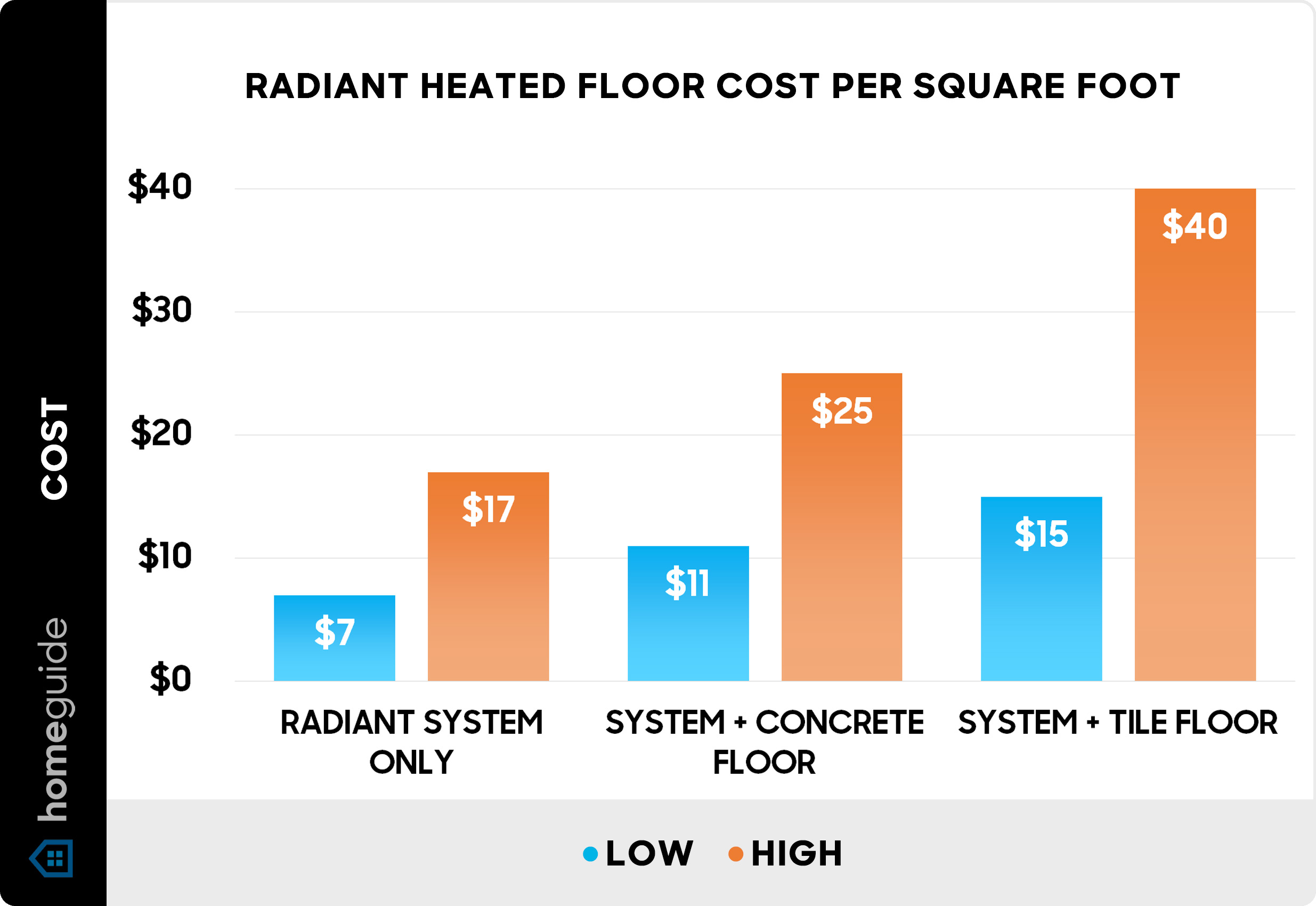Radiant floor heating systems are becoming increasingly popular due to their energy efficiency, comfort, and versatility. These systems work by evenly distributing heat across the floor, creating a warm and inviting environment. But what are the costs involved, and is it a worthwhile investment? This detailed cost analysis of radiant floor heating systems examines their installation, operational, and maintenance expenses, helping you decide if they fit within your budget and objectives.
What Are Radiant Floor Heating Systems?
Radiant floor heating systems utilize either electric cables or hydronic tubing to generate heat beneath the floor. The heat radiates upward, warming the room from the ground up. This approach eliminates cold spots, minimizes energy waste, and ensures consistent comfort.
There are two primary types:
Electric Radiant Heating: Involves electric cables or mats placed under the flooring.
Hydronic Radiant Heating: Uses water-filled tubing linked to a boiler or heat pump.
Each system has its own set of advantages and cost factors, which we will delve into further below.
Initial Installation Costs
The initial costs of radiant floor heating systems can vary depending on the type of system, the size of the area being heated, and the flooring material used.
1. Electric Radiant Heating Systems
Electric systems are generally less costly to install since they do not require a complicated network of pipes or a boiler. They are particularly suitable for smaller areas like bathrooms or kitchens.
- Material Costs: $8 to $15 per square foot
- Installation Costs: $6 to $10 per square foot
- Total Cost for a 500 sq. ft. Area: $7,000 to $12,500.
Hydronic Radiant Heating Systems
Hydronic systems are mostly more cost-effective for heating larger areas, although they come with higher initial setup costs due to the need for piping and boilers.
- Material Costs: $6 to $12 per square foot
- Installation Costs: $10 to $20 per square foot
- Boiler Costs: $1,500 to $3,000
- Total Cost for a 500 sq. ft. Area: $10,000 to $25,000
Operating Costs
A key factor in analyzing the costs of radiant floor heating systems is their ongoing operational expenses.
1. Electric Systems
Electric radiant heating systems tend to be less efficient and more costly to operate, particularly in larger spaces.
Energy Usage: 12 watts per square foot per hour
Monthly Cost for 500 sq. ft.: $150 to $300 (depending on energy rates and usage patterns)
2. Hydronic Systems
Hydronic systems are more energy-efficient since water retains heat better than electric cables.
Energy Source: Gas, propane, or solar-powered boilers
Monthly Cost for 500 sq. ft.: $50 to $150 (depending on fuel source and boiler efficiency)
Comparative Analysis
For smaller areas or occasional use, electric systems might be adequate despite their higher operational costs. However, for heating an entire home, hydronic systems can provide significant long-term savings.
Maintenance Costs
Radiant floor heating systems require less maintenance compared to traditional heating systems.
1. Electric Systems
- Maintenance Requirements: Minimal; occasional checks for electrical issues
- Annual Costs: $50 to $100
2. Hydronic Systems
- Maintenance Requirements: Periodic inspection of boilers, pumps, and tubing
- Annual Costs: $200 to $500
Long-Term Cost Savings
While the upfront investment for radiant floor heating systems may be higher, they provide significant savings in the long run through enhanced energy efficiency and lower heating bills.
Electric Systems: Ideal for focused heating, helping to keep operational costs in check.
Hydronic Systems: Can lead to energy bill savings of up to 30% compared to traditional forced-air systems. Over a span of 20 years, a hydronic system might save homeowners between $5,000 and $10,000 in energy expenses, depending on usage patterns and local energy rates.
Additional Cost Considerations
1. Flooring Material
Radiant floor heating is most effective with materials such as tile, concrete, or stone, which have good thermal conductivity. In contrast, wood and carpet are less efficient and may need extra modifications, potentially raising costs by $2 to $4 per square foot.
2. Insulation
Effective insulation is crucial to minimize heat loss. Adding insulation beneath the system can cost an additional $1 to $3 per square foot but will help lower energy costs over time.
3. Smart Thermostats
Investing in a smart thermostat can enhance energy efficiency, adding $150 to $300 to the initial setup cost, but it can lead to substantial energy savings in the long run.
Pros and Cons
Pros
- Energy-efficient heating solution
- Consistent warmth throughout the space
- Better indoor air quality (no forced air circulation)
- Minimal maintenance required
Cons
- High initial costs
- Difficulties with installation in older homes
- Slower heating response compared to forced-air systems
Is Radiant Floor Heating Worth It?
Deciding whether to invest in radiant floor heating systems hinges on your individual needs, budget, and objectives. If you’re looking to heat a small bathroom or kitchen, an electric system might offer the convenience and comfort you desire. For heating an entire home, hydronic systems tend to provide better value and efficiency over time.
When evaluating the costs of radiant floor heating systems, it’s important to factor in both the initial and ongoing expenses. Although the upfront costs can be high, the comfort, energy savings, and low maintenance make it a worthwhile option for many homeowners.
Conclusion
Radiant floor heating systems present a modern, efficient, and comfortable choice for homeowners aiming to improve their living environments. By thoroughly assessing the costs, including installation, operation, and maintenance, you can make a well-informed decision that suits your needs and budget.
Whether you opt for an electric or hydronic system, radiant floor heating represents an investment in comfort and energy efficiency. With careful planning and execution, it can deliver lasting warmth and value for many years.




Leave a Comment